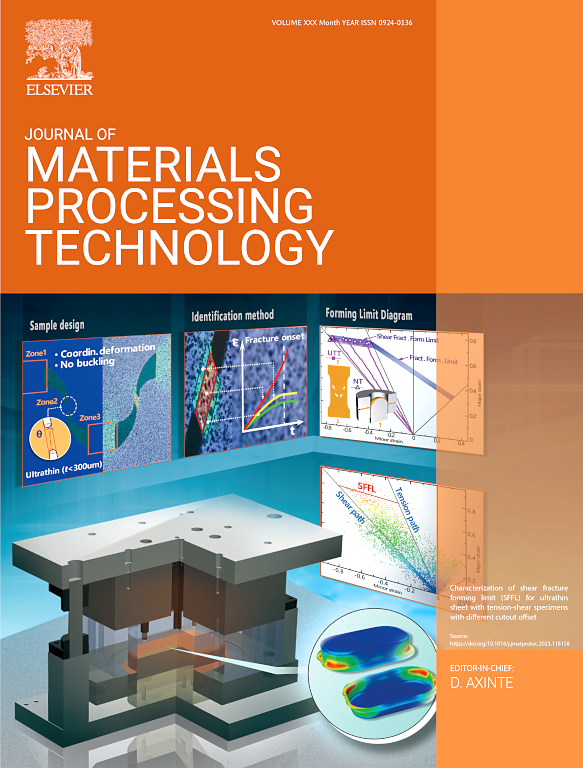Formation mechanism and prediction model for peripheral coarse grain of high-strength aluminum alloy thermoplastic forming component: A case study on 2195 Al-Li alloy extrusion profile
IF 6.7
2区 材料科学
Q1 ENGINEERING, INDUSTRIAL
Journal of Materials Processing Technology
Pub Date : 2025-02-16
DOI:10.1016/j.jmatprotec.2025.118776
引用次数: 0
Abstract
Peripheral coarse grain defect often forms in high-strength aluminum alloy components, which pose great risks to service reliability and safety in aerospace applications. The prediction and suppression of this defect has become fundamental scientific challenges. To address this, this study takes the extrusion of 2195 Al-Li alloy as a case study to explore three key scientific issues: the formation mechanism of peripheral coarse grain, prediction models, and suppression strategies. It indicates that the formation of peripheral coarse grains primarily occurs in areas of plastic strain accumulation. As the plastic strain increases, a thicker layer of peripheral coarse grains is formed. The fundamental formation mechanism of peripheral coarse grain involves two primary steps. Initially, the accumulation of high plastic strain triggers dynamic recrystallization and grain refinement. Subsequently, during solid solution treatment, rapid grain boundary migration driven by large curvature leads to the coarsening of the fine grains. The prediction models for recrystallization and grain coarsening were established, which were embedded finite element software and successfully predicted the recrystallization driving force, recrystallization fraction, grain size, and grain coarsening rate in extrusion processing. Based on these findings, the strategies to suppress the peripheral coarse grain were proposed. This study fundamentally establishes a transferable framework that connects the thermoplastic forming process of high-strength aluminum alloys with the prediction and control of peripheral coarse grains, which allows for more reasonable process optimization strategies. This generic approach thus offers predictive guidelines for optimizing the microstructure and properties of other high-strength aluminum alloys.
求助全文
约1分钟内获得全文
求助全文
来源期刊

Journal of Materials Processing Technology
工程技术-材料科学:综合
CiteScore
12.60
自引率
4.80%
发文量
403
审稿时长
29 days
期刊介绍:
The Journal of Materials Processing Technology covers the processing techniques used in manufacturing components from metals and other materials. The journal aims to publish full research papers of original, significant and rigorous work and so to contribute to increased production efficiency and improved component performance.
Areas of interest to the journal include:
• Casting, forming and machining
• Additive processing and joining technologies
• The evolution of material properties under the specific conditions met in manufacturing processes
• Surface engineering when it relates specifically to a manufacturing process
• Design and behavior of equipment and tools.
 求助内容:
求助内容: 应助结果提醒方式:
应助结果提醒方式:


